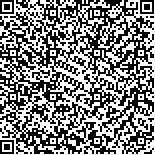| 摘要: |
| 目的 生态用地是生态文明城市建设、创造美好人居环境的关键。在城市化进程加快的背景下,分析城市生态用地的数量和空间格局变化过程及其生态效应具有重要意义。方法 文章选用分辨率为30m的2000—2015年3期土地利用覆被数据,采用土地利用动态度、扩展综合指数、土地利用转移矩阵、土地利用转入和转出率、土地利用信息熵等地理计量模型、指标,开展武汉市生态用地时空变化分析。结果 武汉市生态用地总面积减少,生态用地利用动态度较大,生态用地变化剧烈,其中森林、水体是转为非生态用地最多的地类,耕地是生态用地增加的主要来源。生态用地转出多,转入少,空间分布广且零散。生态用地减少整体上围绕江岸、江汉、武昌等中心城区向城郊呈现“多→少”的扩散形态。黄陂区、江夏区是森林减少的主要地区,蔡甸、新洲、武昌是主要水体转出区。生态用地增加以新洲区、东西湖区的水体和黄陂区的森林为主。生态用地信息熵整体下降,生态用地多样性降低。结论 武汉市生态用地的变化反映了城市扩张的进程,一定程度上加剧了生态景观格局的破碎度、城市内涝问题,破坏了生态系统的稳定性和多样性。 |
| 关键词: 生态用地 转移矩阵 信息熵 景观格局 武汉市 |
| DOI:10.7621/cjarrp.1005-9121.20210120 |
| 分类号:F205 |
| 基金项目:国家自然科学青年基金项目“气候协变性对我国东北粮食作物单产影响的空间异质性研究”(41701111) |
|
| ANALYSIS OF SPATIAL AND TEMPORAL CHANGES OF ECOLOGICAL LAND USE IN WUHAN CITY FROM 2000 TO 2015 |
|
Zhang Mengxian1, Zhou Yong1, Cao Junjun1,2, Chen Guangping4, Ye Qingqing3
|
|
1.Key Laboratory of Geographical Process Analysis and Simulation of Hubei Province, Central China Normal University, Wuhan 430079, Hubei, China;2.Institute of Agricultural Resources and Regional Planning, Chinese Academy of Agricultural Sciences, Beijing 100081, China;3.Institute of Yangtze River Basin Economic Research, Hubei Academy of Social Sciences, Wuhan 430077, Hubei, China;4.School of Earth Sciences, Zhejiang University, Hangzhou 310027, Zhejiang, China
|
| Abstract: |
| Ecological land is key to the construction of ecological civilization city and the creation of beautiful living environment. In the background of accelerating urbanization, it is necessary to analyze the change process and ecological effect of urban ecological land in quantity and spatial pattern. The data of land use and cover for the third phase of 2000-2015 with a resolution of 30m was selected, the Geoeconometric models and indicators, such as dynamic attitude of land use, comprehensive index of land use expansion, land use transfer matrix, land use transfer rate and land use information entropy, were used to analyze the quantity of ecological land, spatial pattern change and process of Wuhan. The results showed that the total area of ecological land in Wuhan decreased, the dynamic attitude of ecological land use were large, and the ecological land changed dramatically. More ecological land was transferred out, but less was transferred in. The space was widely distributed and scattered. The reduction of ecological land was generally spread around the urban areas such as Jiang'an, Jianghan and Wuchang to the suburbs. Huangpi district and Jiangxia district were the main areas for forest reduction. Caidian, Xinzhou and Wuchang were the main water body transfer areas. The increase in ecological land was mainly based on the water bodies in Xinzhou district, Dongxihu district and the forests in Huangpi district. The information entropy of ecological land decreased as a whole and the diversity of ecological land decreased. It concludes that the change of ecological land in Wuhan reflects the process of urban expansion, which to some extent aggravates the fragmentation of ecological landscape pattern and urban waterlogging, and destroys the stability and diversity of the ecological system. |
| Key words: ecological land transfer matrix information entropy landscape pattern Wuhan |

